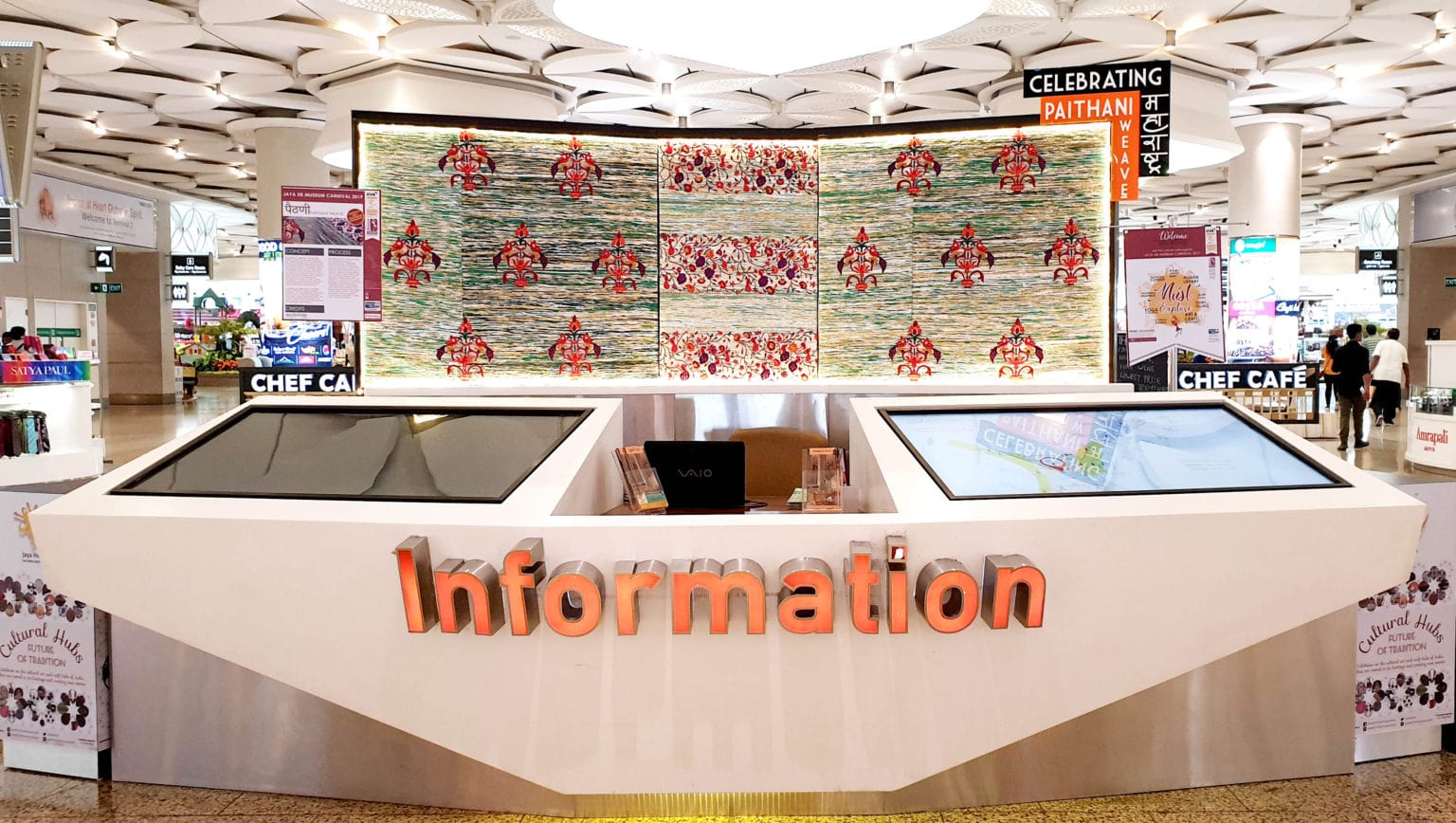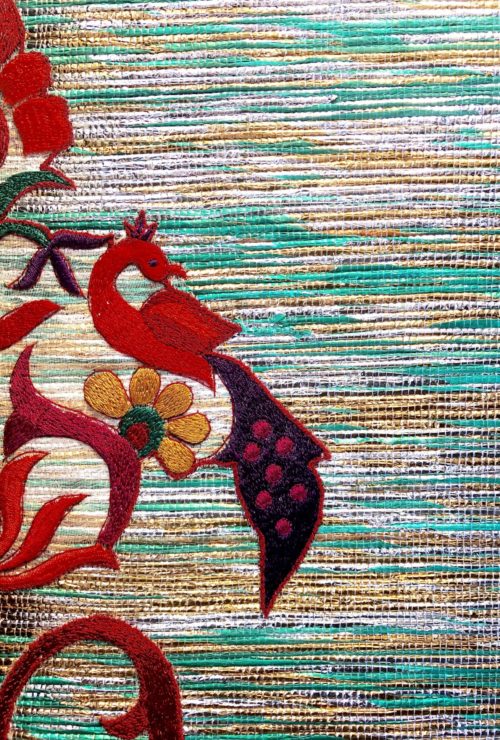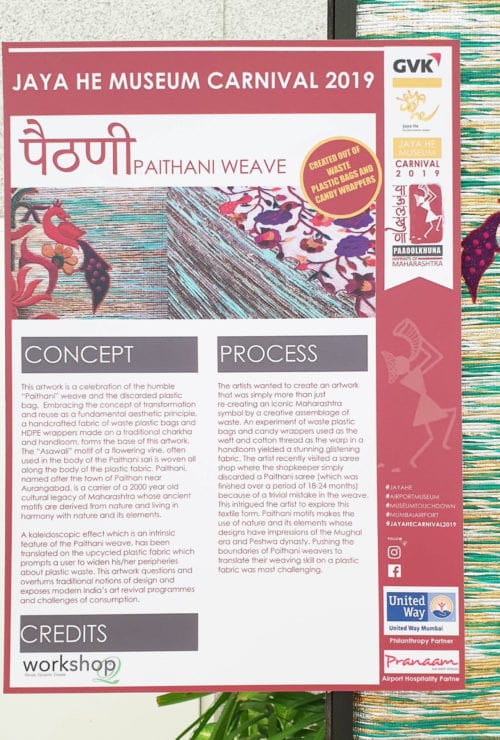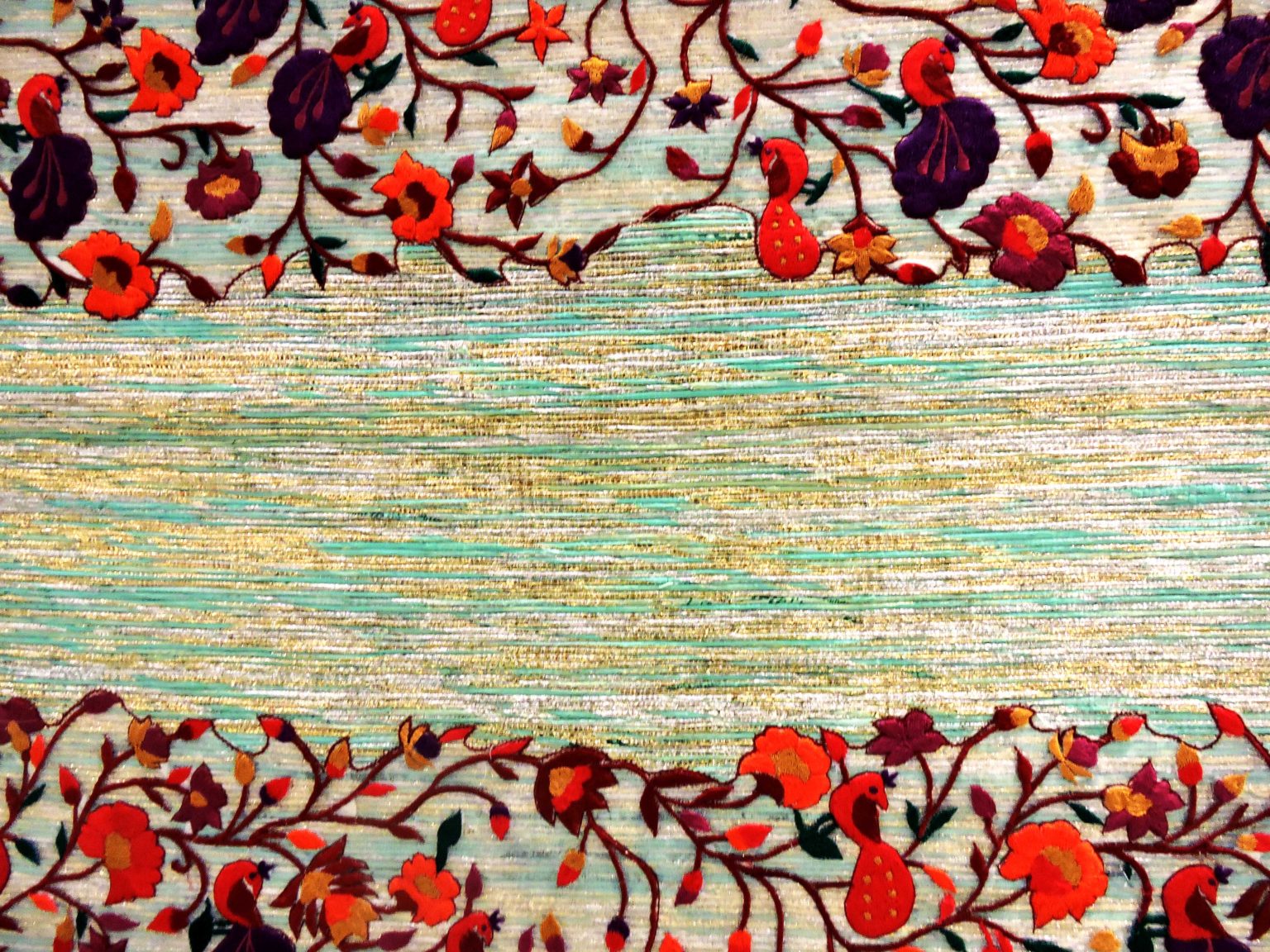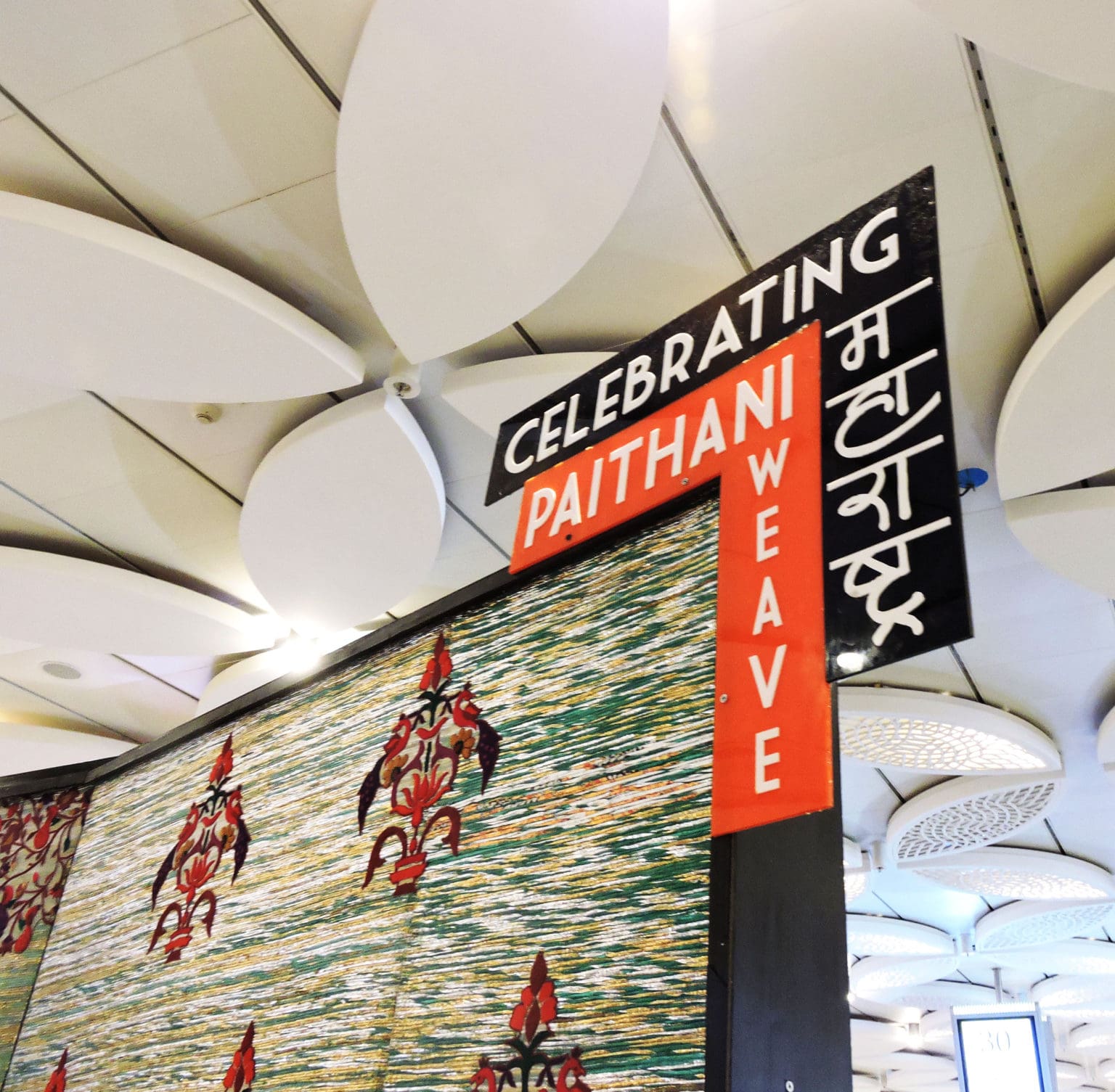This Art Installation is a celebration of the humble “Paithani” weave and the discarded plastic bag. Embracing the concept of transformation and reuse as a fundamental aesthetic principle, a handcrafted fabric of waste plastic bags and biscuit wrappers made on a traditional handloom, forms the base of this artwork. Paithani, named after the town of Paithan near Aurangabad, is a carrier of a 2000 year old cultural legacy of Maharashtra whose ancient motifs are derived from nature and living in harmony with nature and its elements. The “Asawali” motif of a flowering vine, often used in the body of the Paithani sari is woven all along the body of the plastic fabric.
A kaleidoscopic effect which is an intrinsic feature of the Paithani weave, has been translated on the upcycled plastic fabric which prompts a user to widen his/her peripheries about plastic waste. This artwork questions and overturns traditional notions of design and exposes modern India’s art revival programmes and challenges of over consumption.
